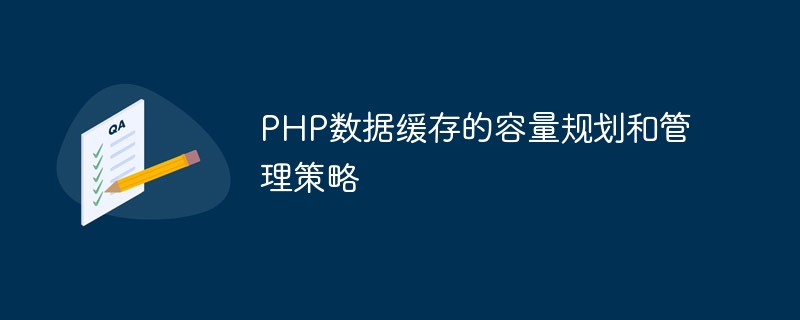

Capacity planning and management strategy for PHP data cache
Introduction:
When developing web applications, in order to improve the performance and response speed of the system, it is often used Cache to store frequently used data. As a commonly used server-side programming language, PHP also provides a variety of caching mechanisms for developers to use. This article will introduce capacity planning and management strategies for PHP data cache, with code examples.
Normally, the cache capacity can be determined based on the estimated data volume and the system's processing capabilities. A simple method is to use the LRU (Least Recently Used) algorithm to eliminate the least recently used cache data to ensure that the cache capacity is within a certain range.
The following is a sample code used to calculate the required cache capacity:
<?php // 预估的数据量大小(单位:KB) $dataSize = 1024; // 系统内存大小(单位:MB) $systemMemory = 2048; // 计算缓存容量(单位:MB) $cacheCapacity = ($systemMemory * 1024) / $dataSize; echo "需要的缓存容量为:" . $cacheCapacity . "MB"; ?>
<?php
$key = 'cache_key';
$cacheDuration = 3600; // 缓存过期时间(单位:秒)
// 尝试从缓存中获取数据
$data = getFromCache($key);
if (!$data) {
// 缓存过期或不存在,重新加载数据
$data = loadDataFromDatabase();
// 将数据存入缓存
saveToCache($key, $data, $cacheDuration);
}
// 使用缓存数据
useCachedData($data);
?><?php
$key = 'cache_key';
// 监听数据更新事件
addEventListener('data_updated', function() use ($key) {
// 数据更新,使缓存失效
invalidateCache($key);
});
// 尝试从缓存中获取数据
$data = getFromCache($key);
if (!$data) {
// 缓存失效或不存在,重新加载数据
$data = loadDataFromDatabase();
// 将数据存入缓存
saveToCache($key, $data);
}
// 使用缓存数据
useCachedData($data);
?>Conclusion:
When developing web applications, reasonable cache capacity planning and management strategies are crucial to improving system performance and Speed of response is critical. This article introduces capacity planning and management strategies for PHP data caching, and provides code examples for reference. Developers can choose appropriate cache capacity and management strategies based on actual needs, and optimize them based on actual business scenarios.
The above is the detailed content of Capacity planning and management strategies for PHP data cache. For more information, please follow other related articles on the PHP Chinese website!




